Red Square is one of the famous places in Russia. In this article, we will explain to you about this field. Most of Moscow’s sights are located around this square, and it is a wonder in terms of history and architecture; So it is not just a simple field.
Characteristics of Moscow’s Red Square
Red Square is not only the heart and soul of Moscow, but also home to some of the city’s most iconic historical buildings with distinctive architecture. When you stand in the middle of the square, you will notice exactly the grandeur and beauty of the surrounding buildings.
Buildings with red bricks, which some people consider to be a reference to the communist government that ruled the country of Russia; But we still don’t know if this is the reason for naming the field or not!
Red in Russian is very similar to the word Krasivaya, which means beautiful, which can describe Red Square in one word. Over the years, this square has witnessed very important events that have changed the course of Russian history.
The area of Moscow’s Red Square is about 73,000 square meters, and among the most important buildings near it, I can mention the Kremlin Palace and the Moscow River. Red Square dates back to the end of the 15th century; Of course, some sources have mentioned that it dates back to the 11th century. This square was included in the UNESCO World Heritage List in 1990.

Image from: Assets-editorial-aetnd
One of the most important reasons that make Moscow’s Red Square one of the must-see places in Russia is the historical buildings close to it.
This square has almost become the central point of the city of Moscow; Because it has caused the design and architecture of the city of Moscow to be in the shape of a circle, and the center of this circle is the Red Square of Moscow.
Red Square has not changed much in the last 100 years. Tourists now come to this square to enjoy the beautiful and extraordinary architecture and design of the buildings around it.
Buildings around Red Square, Russia
Some of the buildings around Red Square in Moscow date back to the Middle Ages; But it has remained until today. Almost most of the first ones in Russia were made in Moscow and Red Square. Among these firsts, we should mention the first public university and Moscow library and printing house.
Saint Basil’s Cathedral and Lenin’s Mausoleum are among the most famous sights in Moscow near Red Square. Each of these buildings with its attractive and special architecture has turned Red Square into a symbol of Moscow.
Each of these buildings alone displays a part of history with its architecture; For example, St. Basil’s Church itself is a representation of the Renaissance style of architecture.
Where is Red Square in Moscow?
Russia’s Red Square is located in Moscow and many of the capital’s main streets reach this square. This square is located east of the Kremlin Palace and north of the Moscow River.
In fact, the Red Square of Russia has become a center for the circular formation of the city of Moscow and is in a way the center of the city’s architectural circle.

Image from: Britannica
Access to Moscow’s Red Square
There are many ways to access Russia’s Red Square, which we will explore below.
Moscow’s Red Square by metro
Moscow has 17 lines and 230 stations and is known as the oldest subway in the world. You can go to Red Square through different train lines and the following stations.
- Moscow train line 1 and Okhotny Ryad station (distance to Red Square 170 meters and 3 minutes of walking)
- Moscow train line 2 and Teatralnaya station (distance to Red Square is 350 meters and 5 minutes of walking)
- Moscow train line 3 and Ploshchad Revolyutsii station (distance to Red Square is 400 meters and 5 minutes of walking)

Image from: Britannica
Moscow’s Red Square by taxi
Online taxi is one of the easiest ways to get to Red Square from anywhere in Moscow right in front of your accommodation. Just install the Russian online taxi application to take a trip to the red square in the world.
Moscow’s Red Square by bus
Due to the strategic location of Red Square in Moscow, not many buses pass near the square and you have to walk a little. Russia’s vast and powerful transportation system has made it possible for people to reach all parts of the city using various vehicles such as buses, electric buses, vans, and trams.

Image from: Klook
The best time to visit Red Square in Moscow
Russia is known as a cold country; Therefore, autumn and especially winter is very hard and cold.
For this reason, perhaps the best time to visit Moscow’s Red Square and travel to Russia is spring and summer (mid-March to mid-September); Of course, you should not forget that most tourists choose these seasons to travel; Therefore, the city of Moscow may be more crowded than before.
If you don’t mind a lot of crowds, it is better not to travel to Russia during the tourist season. The best time for you is mid-September to mid-November; Of course, if you are looking to participate in the extraordinary celebrations of Red Square in Moscow during the New Year celebration; So you should travel to Russia a little later.
Due to the beautiful nature and favorable weather conditions of Russia in spring and summer, most travel tours slightly increase the cost of tickets and tours; Therefore, compared to autumn and winter, you have to pay more.
History of Moscow’s Red Square
Moscow’s Red Square dates back to the 14th and 15th centuries. Red Square has always been the main square of Moscow and it can be said that its formation dates back to the 1490s; That is, right when the new Kremlin Palace with those red brick walls was built in Moscow.
At that time, the eastern side of the palace rampart was vulnerable; Because it was not protected by the river or even any other barrier. For this reason, a part of the square outside the walls was cleared in order to create a field of fire for shooting, and finally it became Moscow’s Red Square.
Before the formation of the field
Moscow Castle, which is now called the Kremlin, was built on a hill called Borovitsky Hill, and there was a large meadow in the east of it. With the passage of time and the prosperity of business and life in the city of Moscow, that meadow was settled.
After the completion of the Kremlin walls, this square was for a long time a focal point in the social and political history of Russia and the former Soviet Union. Red Square has several names; But its current name, “Red Square”, has been used since the 17th century.
As we mentioned, before they built the Alevizov moat, the eastern part of the Kremlin Palace was very vulnerable. For this reason, the wall of this part of the palace is higher than other places.

image from: Squarespace
When the Kremlin Palace with its grandeur needed more security, Russian people chose to live near the palace to be safe in case of war.
When people came to this part of Moscow, they brought with them a settlement, part of which was the formation of a large bazaar. The presence of the Moscow River made it easier for merchants to transport goods, and this also made the city expand and the market more prosperous.
Some old documents say that this bazaar formed the main foundations of Red Square, which in the distant past was called “Trog” which means “market” in Russian.
The fate of Red Square in the 15th and 16th centuries
During the reign of “Ivan the Third” nicknamed Ivan the Great, i.e. between 1440 and 1505 AD, new palaces, towers and churches were built around the Kremlin Palace. It was in 1509 AD that a fundamental change was made in Red Square. An Italian architect named “Aloysio Niu” built the Alvizov moat by order of “Ivan the Great”.
With the construction of the moat, the Kremlin Palace became an island; Because on the other sides of this palace, there were 2 important rivers of Moscow, the Neglinaya and Moskva rivers, which made the palace impregnable; Of course, later they filled the ditch and paved it.
Near the Weskersensky Gate, they built a pit where tigers and lions were kept. These tigers and lions were a gift from the kings of the East to the Tsar of Russia. Interestingly, in this same pit, they built a channel that was the place where the Russian Tsar’s elephant was kept.
During the period of “Ivan IV” i.e. “Ivan the Terrible”, i.e. between 1530 and 1584 AD, many developments took place in Moscow’s Red Square. After the great fire that happened in 1547, by the order of Ivan IV, all the wooden shops on the eastern side of Sersosaman Square were found.

image from: Thoughtco
It was in these years that Saint Basil’s Cathedral was built. At that time, they had not yet built the pyramid roofs or the beautiful domes of the Kremlin Palace.
In 1595, the buildings around the square were reconstructed and a platform was built to issue tsar’s decrees, which was called Lobnoye Mesto platform.
The fate of Red Square in the 17th century
At the beginning of the 17th century, Moscow’s Red Square became a place to exchange various news and even rumors. If someone wanted to know the news firsthand, he would put on a shawl and hat and go to the square.
It was between 1624 and 1625 that cone-shaped roofs (similar to tents) were placed on the Spasskaya tower for the first time. The architect who proposed this style of roofs was Christopher Galloway, whose task was to design the new clock tower.
In the middle of the 17th century, a gilded double-headed eagle was placed on the clock tower, and after that the Red Square of Russia became known as Krasivaya, which means “beautiful” in Russian.
Between 1654 and 1667, Russia had a long 13-year war with Poland; Because Poland was not that powerful economically, it could not continue this long and attrition war. This led to the conclusion of an agreement in which strategic areas such as Kiev were added to Russia.
The end of the war marked the beginning of Russia becoming a superpower in Eastern Europe. By the time the war ended, Moscow’s Red Square had become an important commercial center.

image from: Wikimedia
The fate of Red Square in the 17th century
It was in 1702 that the first Russian public theater was built next to a gate named “Nikolsky”. This building was standing before the fire in 1737. During the reign of “Catherine the Great”, the buildings around Red Square in Moscow made significant improvements. In 1775, the first Moscow University was established near Red Square in Russia.
The fate of Red Square in the 19th century
Moscow’s Red Square has been the scene of executions, demonstrations, riots, parades and speeches. Maybe many Russian people don’t remember; But as we mentioned, in the distant past there was a moat that separated the square from the Kremlin Palace.
It was almost in 1804 that at the request of some merchants, this ditch was filled and then paved; Of course, a part of the filled ditch was planted with trees in 1913.
A large part of the changes in Moscow’s Red Square dates back to the fires of 1812 and Napoleon’s invasion. The State Historical Museum, which was built between 1875 and 1883, is located at the northern end of the square.
Right in front of it, at the end of the southern part, is the 9-tower Saint Basil’s Cathedral, which some Russians call the “Church of Intercession”.
Between 1888 and 1893, new buildings were built around Red Square in Russia. In a way, they took the place of old buildings; Among these buildings, I can mention the first large store in Moscow. It was around 1892 that Moscow’s Red Square was illuminated with electric lanterns, and this was the beginning of the square’s appearance.
The fate of Red Square in the 20th century
During this period, Moscow’s Red Square maintained its importance. Lenin’s mausoleum was built near the Kremlin wall, turning the square into the ideological center of Moscow.
Khakam Square was the stage for military parades, and the Kazan Cathedral and the Tverskaya Chapel with the Resurrection Gate were demolished to make way for heavy vehicles such as tanks and large vehicles carrying munitions.
After the collapse of the Soviet Union, they built these buildings again. Plans to demolish other parts such as GUM (a beautiful and world-famous department store) and St. Basil’s Cathedral did not come to fruition.
In 1909, the first tram passed through the square. During the time when the Soviet Union ruled, Moscow’s Red Square was still a strategic area in Russia.
The government started military parades from 1919 as a show of power and Lenin’s mausoleum became an important part of Red Square from 1924 onwards. This mausoleum had somehow become the place of famous people.
In 1941, one of the military parades of Moscow’s Red Square was performed when the city of Moscow was surrounded by German forces.

image from: Wikimedia
This was the first historical parade since the birth of Red Square. A second historic parade took place in 1945, where the flags of the defeated German army were dropped at the foot of Lenin’s tomb.
Around 1963, a group of African students demonstrated in Moscow’s Red Square to protest the murder of Edmond Asar Addo, a medical student. This was the first political protest after 1920.
An incredible event happened in 1987 in Moscow’s Red Square. A German amateur pilot named Mathis Rost landed illegally near Red Square. How a 19-year-old boy managed to get through the Soviet defense system was strange and still remains a mystery.
This flight and landing showed that the Soviet defense system was not as powerful as they were proud of.
Moscow’s Red Square was a place for holding ceremonies and celebrations during different historical periods; For example, during the New Year celebration in 2006 to 2008, they opened a ski resort in Maidan.
It was at the same time that Paul McCartney was able to create a historic moment in Red Square by banning the performance of the “Bilts” group by order of the Soviet government.
The reason for the naming of Red Square in Moscow
Many people of Russia and of course people of the world do not know that the name of Red Square in Moscow has nothing to do with communism and the Soviet Union. According to some available documents, the first name of Red Square was “Velikey Torg” meaning “Big Market”. The reason for that was the market that was set up for trade in this area.
Major squares in Russian cities, such as those in Suzdal, Yeltsin and Preslavl-Zalessky, are often called Krasnaya Plishchad or “Beautiful Square”. In ancient terms, the Russian word “красная” meant “beautiful”; But now it means “red” from which the current word “beautiful” or “красивая (‘krasivaya’)” is derived.
In Moscow, Red Square originally described a small area between Saint Basil’s Cathedral, the Spasskaya Tower and the Kremlin Palace, and the Lubnoye Mesto heraldic platform.
Tsar Alexei Mikhailovich officially extended the name to include the entire square, which was previously called Pozhar, meaning “burnt place” or “great fire”, referring to the previous buildings that stood on the site and were burned.
The story of this naming started from there, before the 16th and 17th centuries, the market that was located in the square and included wooden benches and fabric tents that not only caught fire easily; It also spread the fire.

Image from: Wikimedia
The same thing caused Moscow’s Red Square to be called Pozhar for a while, which in Russian means “fire” or “empty ground after the fire”.
The name “Moscow Red Square” was first seen in documents dating back to the middle of the 17th century, during the reign of “Peter the Great”.
It was in 1658 that “Tsar Alexis” issued an order to change the names of some streets and squares in Moscow; But among all these squares, the name of Red Square, which was called Pozhar, remained strong.
In 1661 AD, “Red” officially became a common name and replaced the previous name. Some historians say that they took this name from the stairs of the Red Palace. This staircase reached the reception hall and banquets of the Tsar of Russia.
It is interesting that the red color was known as the traditional color for the rule and power of the Russian tsar. For this reason, many people in Russia and the world thought that the name of the square came from here.
The walls of the tsar’s room were completely red, and the Red Porch was the place where the tsar communicated his orders to the people. In religious and public events, the tsar would come out of this red porch and give speeches to the Russian people. Maybe it is because of the use of red color in these parts that they named the field “Red”.
Celebrations and festivals in Red Square
In Moscow, especially in an important square like Red Square, there are many celebrations and festivals, which we would like to introduce to you below.
Red Square at Christmas
During the New Year holidays, Moscow’s Red Square becomes the most magical place in Moscow. Especially at sunset when they turn on the lights.
Christmas in Moscow is undoubtedly one of the most beautiful in the world. In the heart of the city, you can go ice skating, eat various Russian sweets and participate in Christmas workshops.
Only if you want to be in Moscow’s Red Square on New Year’s Eve, you should leave your accommodation early; Because you might be stuck in traffic or in long lines of people who are at the entrances with metal detectors and security checks.
Moscow authorities limit the number of people allowed to enter the square on New Year’s Eve; So the best solution is to book a ticket.
Military music festival
One of the international festivals held in Moscow’s Red Square is the Military Music Festival. In 2007, the Russian Army Band invited 12 choirs from different countries of the world to participate in the music festival every year in August.
Since then, music lovers as well as the Russian army participate in this festival.

Image from: Wikimedia
Victory parade in Red Square
Since 1945 and on the occasion of the anniversary of the end of the great war, on the important holiday of the Soviet Union, large parades are held in Red Square.
In the previous sections, I mentioned what buildings around Moscow’s Red Square were demolished to make way for the very large parade vehicles. From here you can understand the importance of holding these parades.
The victory parade is held every year on a larger scale and with more preparations than the previous year. This parade is a kind of demonstration of the power of the Russian government.
The Victory Parade is so popular and valuable among the Russian people that every year Russian citizens from all over Russia come to Moscow’s Red Square to visit it.

image fom: Wikimedia
Sights around Moscow’s Red Square
Perhaps it should be said that first of all, the sights around Red Square in Moscow have been formed, which itself has become a factor in the birth of Red Square in Moscow. Therefore, if you are packing for a trip to Russia, you should first visit Red Square and its surrounding attractions.
Red Square Church in Moscow
Moscow’s Red Square Church, or St. Basil’s Cathedral, is one of the most important symbols of the history of architecture in the city of Moscow; Of course, many people know this church by the names of “Mary’s Intercession Cathedral” and “Blessed Basil Cathedral”.
This beautiful and amazing church was built in the 16th century, which is a kind of Russian Orthodox church. The height of the building is about 65 meters and for about 39 years it boasted as the tallest building in the city of Moscow.
It was in 1600 AD that the bell tower was built, which was about 81 meters high, and since then, the Red Square Church in Moscow was no longer the tallest building in the square.
Some historians say that Saint Basil’s Church was built between 1555 and 1561 by two well-known Russian architects, Ivan Barma and Postnik Yakovlev; But some others say that the main designers of this church were originally Italian architects.
A scary legend says that these Italian architects were blinded by Ivan the Terrible so that they could not build a similar church building elsewhere.
The church’s intercession hall was built in 1558 on the tomb of Saint Vasili, who later became known as “Blessed Basil”. This saint was famous for stealing from the rich and giving to the poor; Of course, some people called this saint a “holy fool” because he was not afraid of the Russian tsar.
In the 16th and 17th centuries, when the church became a symbol of the heavenly city on earth, St. Basil’s Church became famous. This church has 9 domes, 2 rosaries and 10 small prayer halls. The synagogues were added to the church in 1929.
Some documents show that the first Red Square Church in Moscow was white like the stones of the Kremlin Palace and had golden domes; But it was in the 17th century that, inspired by the verses of the book “Revelation of John”, its domes were changed and it was painted in the form you see today.
The church was damaged in a fire in 1737 and its reconstruction was completed in the 18th century. In 1990, this church was included in the UNESCO World Heritage List along with Moscow’s Red Square.

image from: Hswstatic
Moscow Kremlin Palace
The Kremlin Palace is known by many as the heart of Moscow. This palace is one of the most important symbols of Russian authority and power in Moscow. In the distant past, the Kremlin Palace was the residence of Russian tsars, royal family and emperors. Since 1991, this palace became the official residence of the President of Russia.
The building of the Kremlin Palace in 1156 AD on the land that belonged to the great Russian princes; That is, it was built on Borovitsky Hill. This palace is located in the east of Moscow’s Red Square and near the Alexander Garden and has 4 gates and a secret passage that leads to the Moscow River.
To build the Kremlin Palace, they destroyed buildings such as the Baroque Palace and the Church of St. John the Baptist. Before the 14th century, the building of the palace was wooden, and because a large part of it was destroyed by a great fire, it was rebuilt with white stones. It was at this time that new rooms, a church and several monasteries were added to it.
In the 15th century, with the removal of the Mongols, Ivan III regained power and invited Italian architects to give a new look to the Kremlin Palace, which can be seen from Moscow’s Red Square.
2 architects named “Pietro Antonio Solari” and “Marco Rufo” accepted the responsibility of rebuilding the palace and it was during this period that the brick walls of the palace and 20 new towers were built.
The Kremlin Palace was captured by the Poles between 1610 and 1612. In 1620, the Kremlin Palace lost its previous importance; But it was still used as the center of Russian government until 1712.
It was in 1812 when Napoleon came to power, a part of this building was destroyed near Red Square in Moscow. After the Bolsheviks came to power in 1917, the Kremlin Palace became the seat of the Soviet government and Lenin. At the same time, parts of the church and palace monasteries were destroyed.
The important thing is that official meetings are held in the Kremlin Palace in 5 halls named “Georgevsky”, “Alexander Nevsky”, “Saint Vladimir”, “Saint Andrew” and “Saint Catherine”.

Image from: Musement.
Government Historical Museum
The State Historical Museum is located at the northern end of Moscow’s Red Square. This museum was built between 1875 and 1883 and houses the largest national treasure and historical works of Russia.
The museum building itself is recognized as a historical work that has a unique architecture. The walls of the museum are made of red bricks like the walls of the Kremlin Palace. The towers of the museum evoke the atmosphere of medieval architecture for tourists.
The museum was built by the order of Alexander II and opened in 1883 during the coronation of Alexander III. About four and a half million pieces of Russian culture and history are stored in the Russian State Historical Museum, some of which date back to ancient times.
One of the interesting parts of the museum near Red Square in Moscow is the genealogy of Russian rulers, where you can see portraits of all Russian tsars and princes.
Another part of the museum is related to the introduction of Eastern Slavic tribes from the 11th to the 13th century, where their clothes and ornaments are displayed.
Various exhibitions are held in the museum, one of which is “Paganism in Russia, Christianity in Byzantium”. In this exhibition, all kinds of spells and images of idols and idolaters carved on stone are displayed.
Among other important exhibitions of the Russian State Museum near Red Square in Moscow, we can mention the permanent exhibition “Arts of the History of the Russian State”. In this permanent exhibition, works such as maps, engravings, portraits, manuscripts, old weapons, clothes, works of art, etc. are displayed.
Most of these objects and historical works have been donated to the museum by the Romanov family and some Russian princes.

Image from: Advantour
Iberian Gate
Ibrin Gate is located in the northwest of Red Square in Russia. This gate is also known by other names such as “Resurrection Gate” or “Veskersensky Gate”.
Ibrin Gate was built in 1535 with the purpose of rebuilding the walls of the tower with bricks. This gate is located near the commercial area of Moscow in the 16th and 17th centuries, namely “Kitay Gorod”, which was surrounded by 13 towers and a high wall in 1530.
When they wanted to rebuild the Iberian Gate in 1680, 2-story rooms were designed in the corridors of the gate, on which they built octagonal grooved roofs like the Kremlin Tower. In 1731, the upper rooms of the gate were jointly used as a mint and a central pharmacy.
After the Moscow University was founded, the university press was moved to these rooms and stayed there until the end of the 18th century. Over the years, the walls surrounding “Kitai Gorod” fell down, and out of the 6 gates that existed in the old days, only the Ibrin Gate or Resurrection Gate remained.
In 1931, the church that was built next to Ibrin Gate and the same gate were destroyed by the Soviet regime to make room for the passage of heavy vehicles for military parades.
In 1995, they rebuilt the gate, which is very similar to the old gate. Ibrin Gate now has 2 twin red octagonal towers with green minarets on top of them.

Image from: Trave
Lobnoye Mesto
Lobnoye Mesto is located right in front of St. Basil’s Cathedral near Moscow’s Red Square. This monument is a circular white stone platform that is 13 meters long.
The name of this platform comes from 2 Russian words “Lob” meaning “forehead” or “sloping river bank” and “Mesto” meaning “place”.
Lobnoye Mesto platform was built in 1530 AD as a place to announce the decrees of the Russian tsar and perform some religious ceremonies. It was the first time in 1547 that Ivan the Terrible used it for a public speech to Russian citizens.
Some Russian people thought that this platform was used to carry out execution orders; But that never happened.
Most of the executions were carried out in a space called Vasilevsky Spusk in the back of St. Basil’s Church. Only once, in 1698, were scaffolds erected near the platform so that they could execute 100 soldiers of the royal guard who had rebelled.
One of the reasons for the popularity of the Lobnoye Mesto platform near Red Square in Moscow was the effect of its location on the performance of the “Triumphant Return of Jesus to Jerusalem” ritual on “Palm Sunday”. This ceremony was held on the Sunday before Easter and symbolically recreated the arrival of Jesus Christ.
A monument to 2 Russian national heroes has been built next to Lubnoi Mesto platform near Red Square in Moscow, which actually narrates the events of 1612 AD.
These two heroes, “Kuzma Minin” and “Dmitry Pozharsky”, stood up to defend Russia against the invading Polish forces. Prince Pozharsky also climbed the platform to announce the liberation of Moscow from the occupiers.

Image from: Volgadream
Kazan Cathedral, Moscow
The Kazan Cathedral of Moscow is located in the northwestern part of Red Square. This church was built in 1612 in celebration of the recapture of Moscow from the Polish invaders. The church building, like many other buildings in the square, was first built with wood; But after the great fire, it was rebuilt with bricks.
The Kazan Cathedral of Moscow is one of the most important buildings in Moscow’s Red Square, and every year on the anniversary of the liberation of Moscow and the expulsion of the Polish occupiers, an official and magnificent parade was held near it with the presence of the Tsar of Russia and the Patriarch (Archbishop of the Russian Orthodox Church).
The church was expanded in the 17th century and an entrance and bell tower were added to the main building. Centuries later, in 1936, Stalin decided to destroy the churches of Moscow’s Red Square. He thought that the building of these churches was an obstacle to holding large military parades and labor celebrations.
For this reason, he ordered the destruction of the Kazan Cathedral of Moscow and other historical monuments around the Red Square of Moscow. In the meantime, St. Basil’s Church survived; But the rest of the buildings were destroyed.
After the fall of the Soviet Union and around 1913, the Kazan church building was rebuilt and the architects tried to stick to the original and old architecture of the previous church building.
Contrasting colors have been used in the construction of this church near Red Square in Moscow. For example, the exterior of the church is made of red bricks with green, white and gold decorations.
In the interior of the church, you can also see extraordinary historical paintings. Those small onion-shaped domes, crosses and curved arches have been able to give the church a unique look.
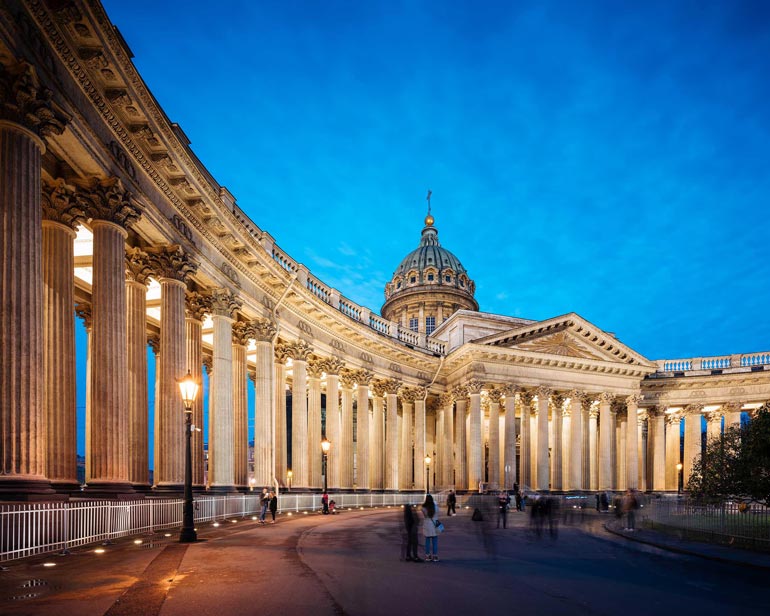
Image from: Benpipe
Lenin’s Mausoleum
Lenin’s Mausoleum is located in the western part of Red Square in Moscow. This tomb is one of the most symbolic buildings in Russia; Because it shows an important part of Russia’s historical developments since the collapse of the Soviet Union in 1991.
Vladimir Ilyich Ulyanov Lenin was the first Soviet leader who died in 1924 at the age of 85. Interestingly, after about 90 years, Lenin’s body is still in an open coffin in the center of Moscow and in Lenin’s mausoleum.
Lenin had willed that after his death he would be buried next to his mother in a cemetery in “Petrograd”; But after his death, different opinions were formed among the heads of the country, where exactly to bury him.
Lenin’s wife was against embalming him; But Stalin managed to impose his opinion. This is how Lenin’s embalmed body was placed in an open mausoleum near Moscow’s Red Square. Some documents show that after Lenin’s death, the Russian government received more than 10,000 telegrams from the Russian people, who requested that the body of their great leader be preserved for future generations.
Lenin’s mausoleum was built by a person named “Alexei Viktorovich Shuchosov” in 1930. Interestingly, a light shines on Lenin’s lifeless body to show his face alive; However, the room temperature is usually kept at 16 degrees Celsius with 80 to 90 percent humidity.
Lenin’s body is washed once a week with mild bleaching agents. The purpose of this work is to fight against fungi and mold.
Once every 18 months, Lenin’s body is bathed in a chemical solution containing glycerol and potassium for 30 days. Meanwhile, his clothes are washed and ironed; Of course, his coat and pants will be changed every 3 years. This is the strangest way to maintain a leader.
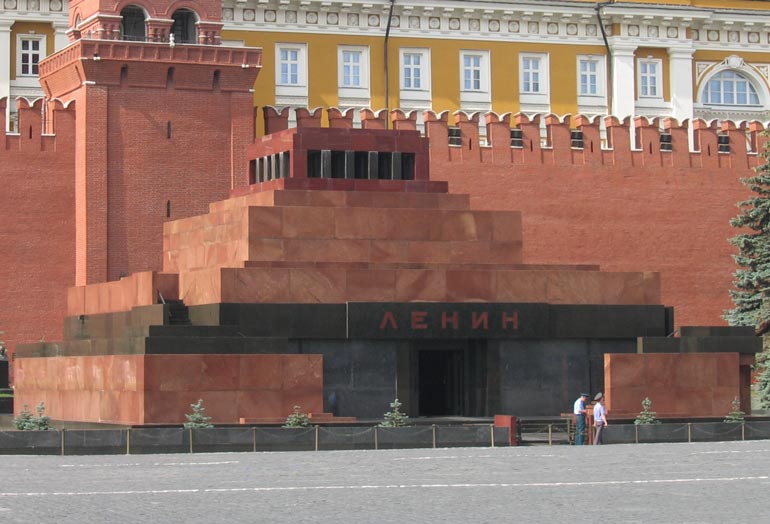
Image from: Wikimedia
GUM shopping center
The GUM shopping center is located on the eastern side of Moscow’s Red Square and is one of the largest shopping centers in Russia. In fact, GUM was built on the land of the previous traditional market and its area is about 2 times the area of a football field. The architecture of this center is in the Renaissance style and it was opened in the 1890s.
The building of this magnificent shopping center was designed by “Alexander Nikanorovich Pomerantsev”. During the Soviet era, GUM boutiques and stores were converted into public apartments, later into administrative offices and finally into shops for the Russian government.
During the Soviet era, there was a secret boutique called “Section 22” in GUM, which sold jackets, trousers and dresses to people connected to the party. Now GUM has become a large and luxurious center for shopping, where many different stores have been opened.

Image from: Sygictraveldata
Cemetery of the leaders of the Soviet Union
The cemetery of the leaders of the Soviet Union is located behind Lenin’s mausoleum and right next to the wall of the Kremlin Palace near Red Square in Moscow. People are buried in this cemetery who made history for Russia in a way.
One of the most famous people in this cemetery is Joseph Stalin, the leader and general secretary of the Communist Party of the Soviet Union. Stalin played a big role in one of the darkest political periods in Russia. Apart from Stalin, some leaders and ministers of the Soviet Union are also buried in this cemetery.
In the part of the cemetery that is located behind the walls of the Kremlin Palace, the famous and important figures of Russian history can be seen. One of these figures is Maxim Gorky.
Among other famous people, I can mention the first cosmonaut in the history of Russia, Yuri Gagarin. Note that tourists are not allowed to take pictures of any part of the cemetery.

Image from: Wikimedia
Moscow River
The Moscow River is a river in the west of Russia that crosses almost the center of the city and finally flows into the Oka River. The Moscow River has a great influence on the city’s weather and has given Moscow a beautiful appearance.
Along the river, you can see a variety of cafes and restaurants that serve hot and cold drinks and famous Russian dishes.
A bridge called Bolshoy Moskvoretskiy was built over the river. When you go on the bridge, you can see a great view of the church and the Kremlin Palace. From here you can see a beautiful view of the skyscrapers of Moscow.

Moscow River
Tips for a memorable trip to Moscow’s Red Square
- Most of the attractions around Red Square in Moscow start operating from 9 or 10 o’clock onwards; Therefore, it is better to visit after this hour;
You have to buy a ticket to enter some buildings and structures, so if necessary, have cash with you; - Moscow is a very cold city in autumn and winter, and it may even be cooler in spring and summer than you think; So take warm clothes with you;
- In many important buildings and structures around Red Square, photography is prohibited; so respect this rule so you don’t get into trouble;
- Entering Moscow’s Red Square on some days of the year, such as New Year’s celebrations, requires the purchase of a ticket in order to be allowed to enter; So, in order not to waste your time, make the necessary arrangements for this in advance.

Moscow’s Red Square
Red Square, the architectural center of Moscow
It’s as if someone slapped the most important square in the face of Moscow in that bone-chilling cold of Russia, which they named Red Square of Moscow. This square has been formed over time and has now become the center of a circle that has formed the architectural style of Moscow. Moscow’s Red Square has witnessed important historical events for centuries and that is why it is now one of the most important places to visit in Russia. If you want to travel to a 1000-year-old history, Red Square is a great choice.

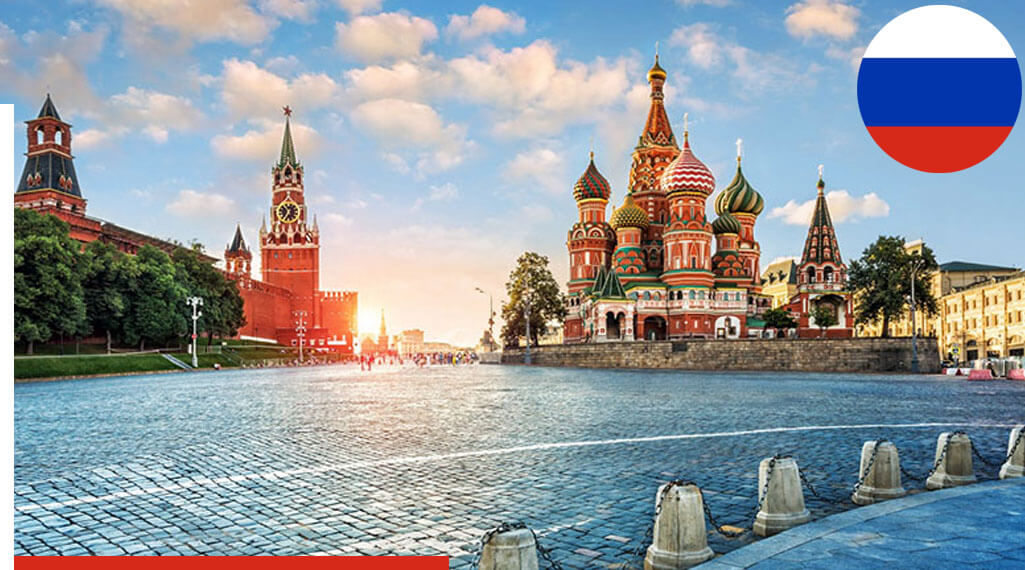
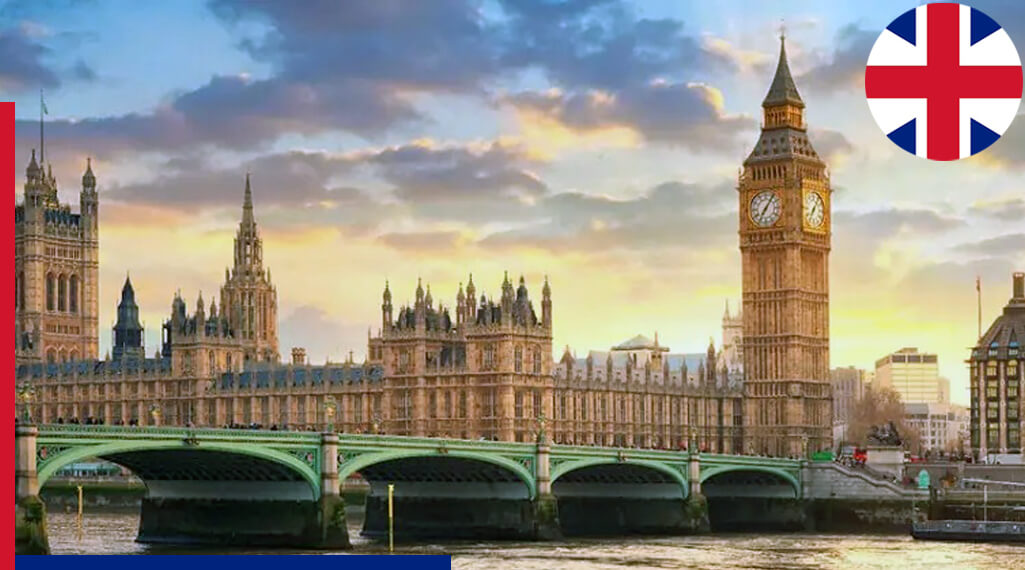
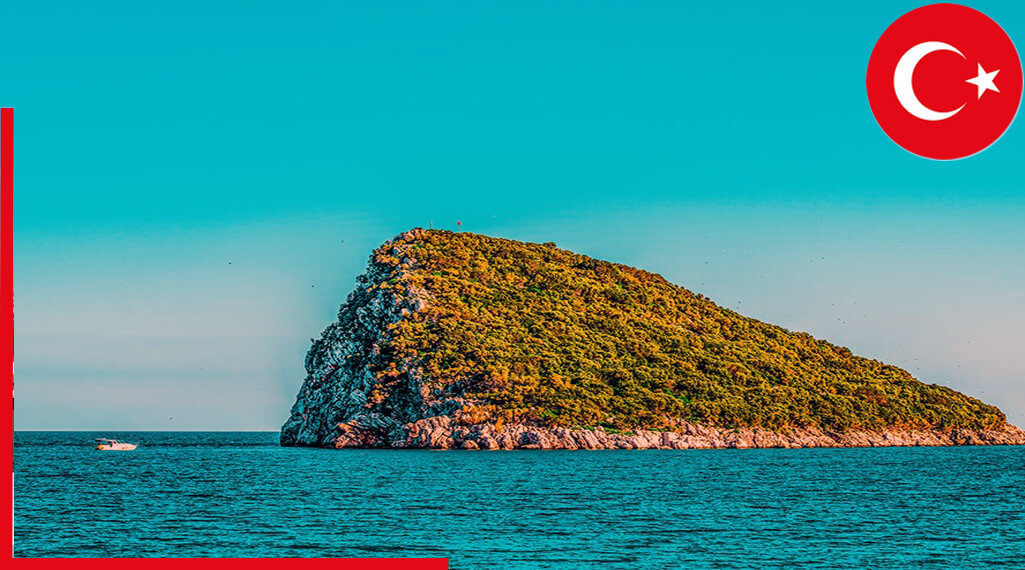
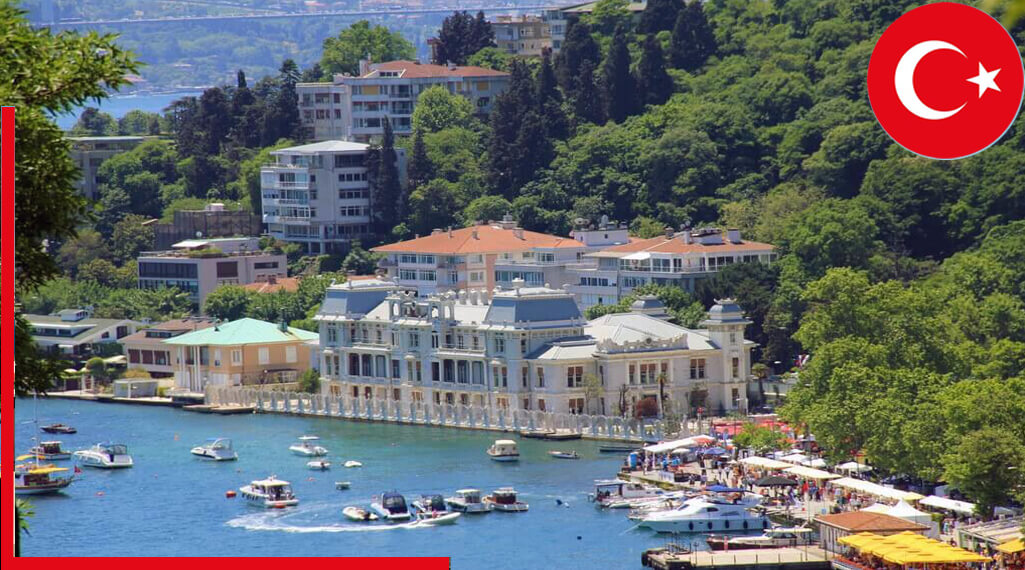
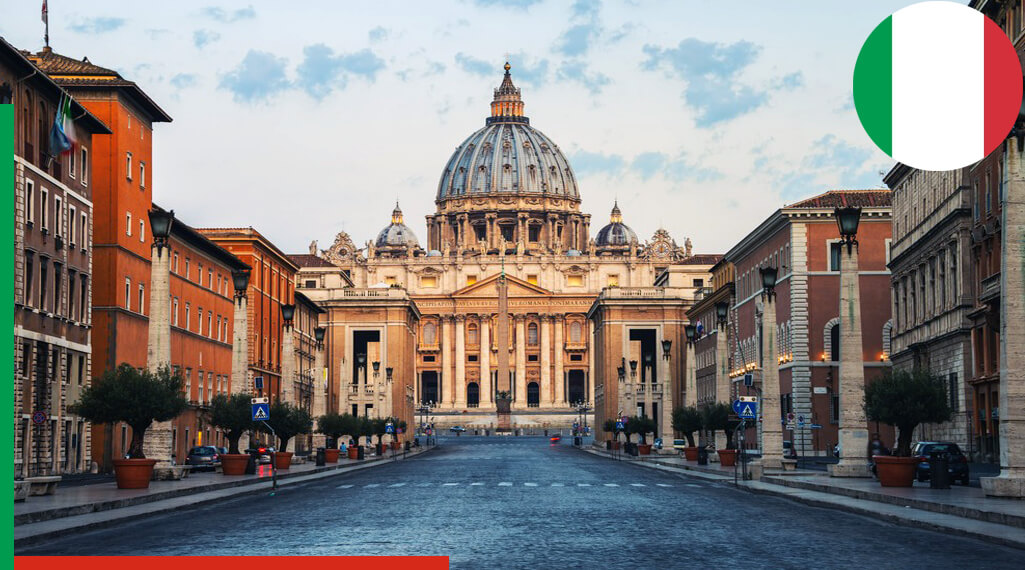
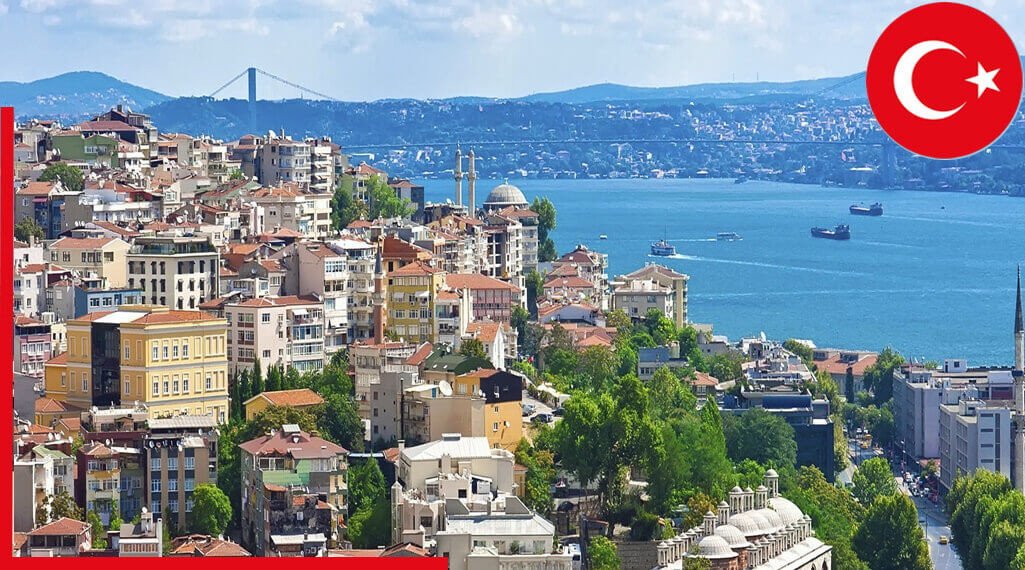
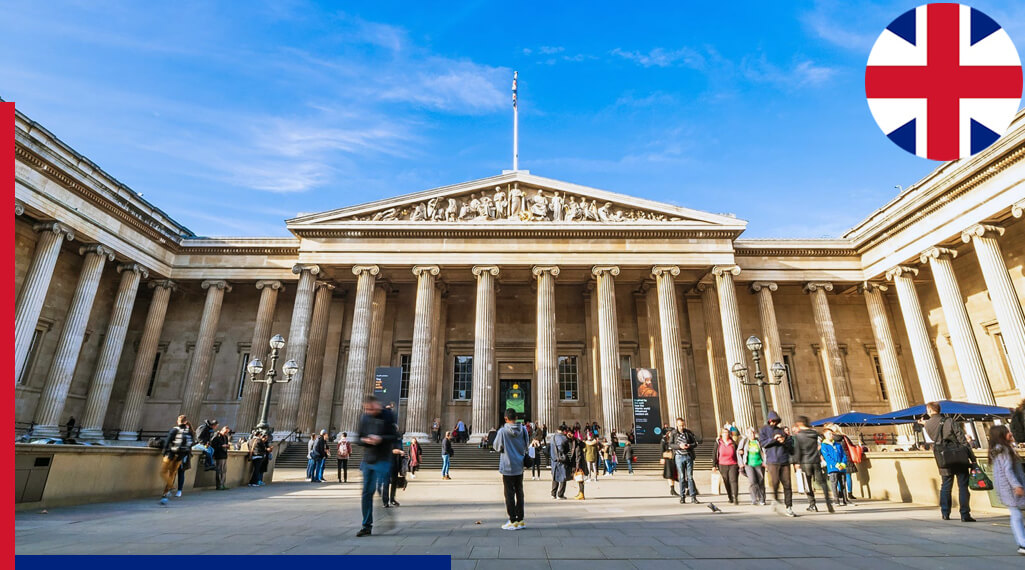
Recent Comments